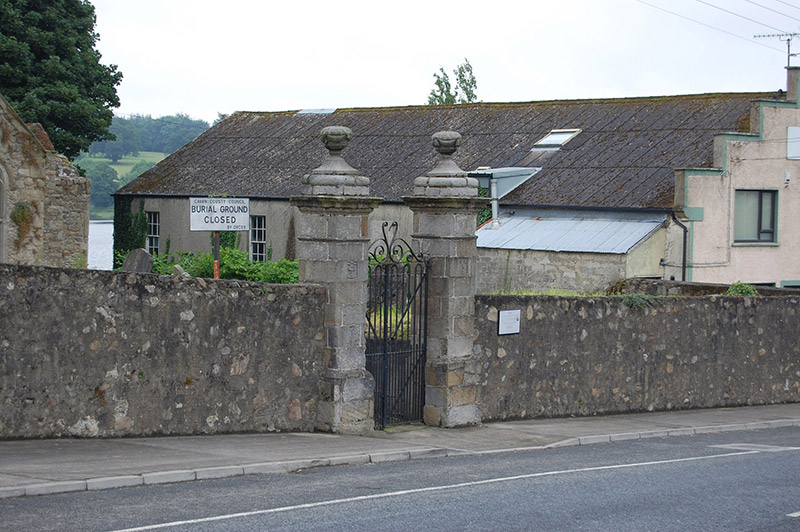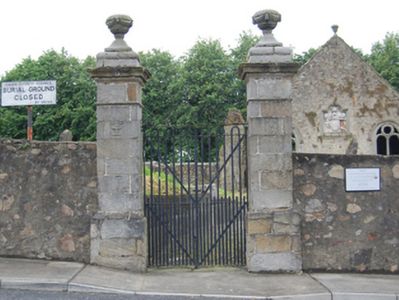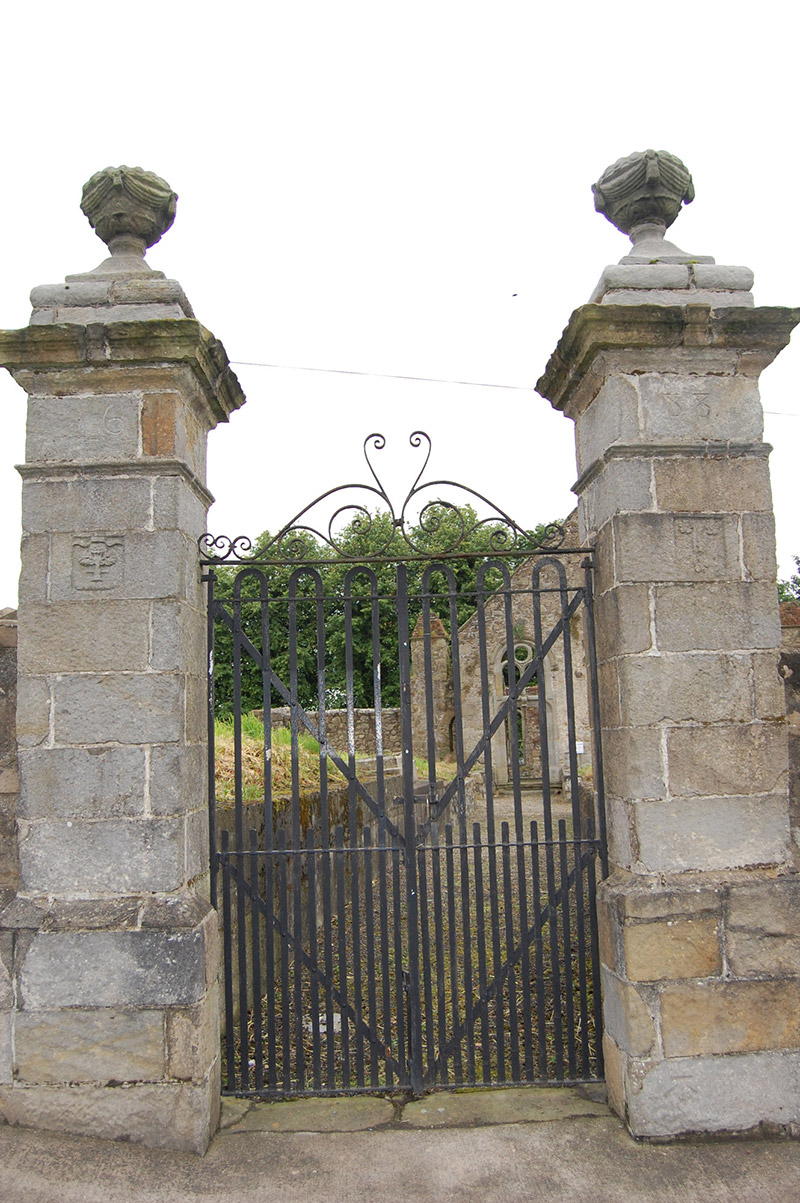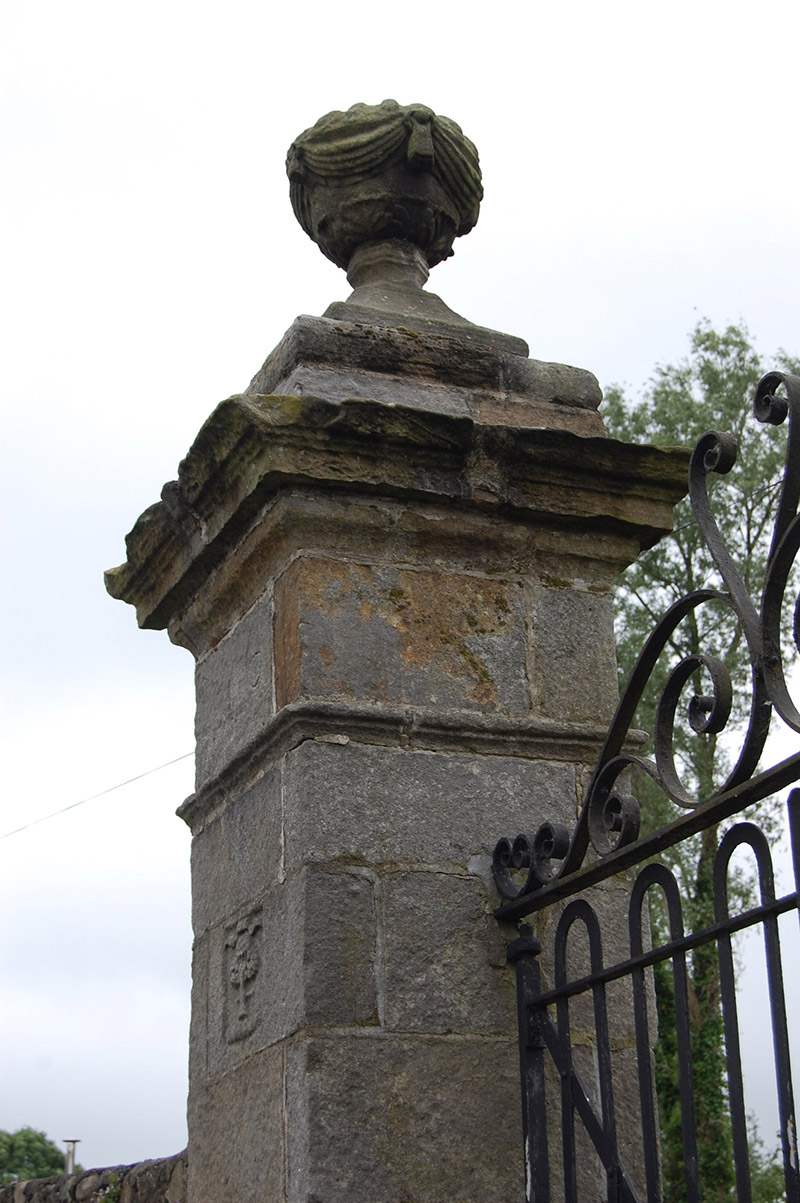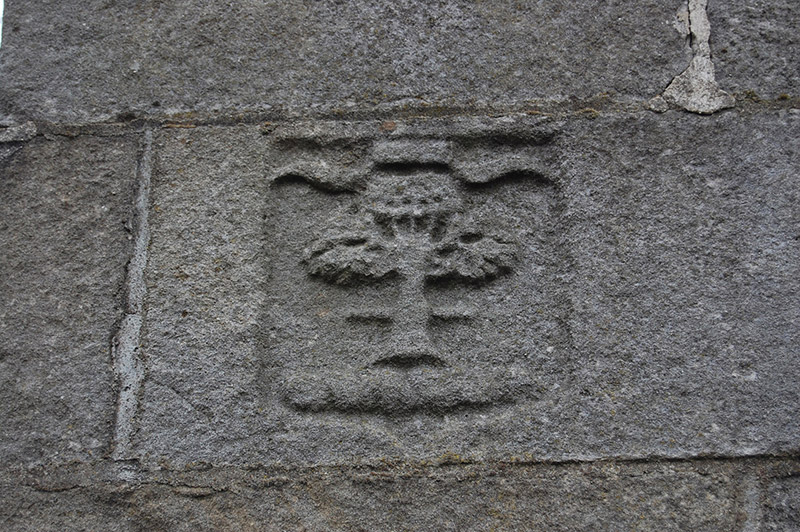Survey Data
Reg No
40309002
Rating
National
Categories of Special Interest
Archaeological, Architectural, Artistic
Original Use
Gates/railings/walls
In Use As
Gates/railings/walls
Date
1685 - 1690
Coordinates
230754, 307588
Date Recorded
14/06/2012
Date Updated
--/--/--
Description
Pair of square-plan sandstone gate piers, built 1688, forming entrance to the churchyard. Ashlar sandstone piers surmounted by finial urns carved with drapery swag detail on pedestal with torus moulding over profiled stone cornice. Plain frieze with incised date to frieze with '16' on west and '88' on east pier, profiled astragal band below. Recessed coats of arms in carved relief below date band on each pier with tree motif to left and flower motifs to right, both now heavily weathered. Aslar base to piers with benchmark to base of east pier. Replacement plain wrought-iron gates with diagonal bracing bars, dog bars, and scrollwork over top rail. Rubble stone boundary and retaining walls to either side with surviving remnants of render.
Appraisal
An pair of early Classical gate piers dating from the period after the Restoration during which this style was established in Ireland, the incised date of 1688 being the year in which James II was deposed in favour of William of Orange. The piers display correctly proportioned classical motits in contrast to the transitional style of the church itself, which refers back to the Jacobean architecture of the earlier part of the century. The piers attest to the fine quality of materials and craftsmanship employed for work of architectural importance in the late seventeenth century. The carved detail is of historical as well as artistic significance, displaying the coats-of-arms of the Hamilton and Southwell families, Lord Southwell of Castle Hamilton having sponsored the construction of the church. The much later benchmark discreetly placed at the base is associated with the historic surveying operation for the Ordnance Survey in the nineteenth century. The piers enhance the architectural setting of the contemporary Jacobean-style church and are a prominent feature of the historic environment on Church Street.
